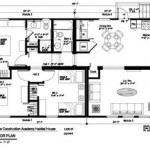What Should A Site-Specific Safety Plan Include?
A site-specific safety plan (SSSP) is a crucial document outlining potential hazards and control measures for a particular project or location. It ensures the safety and health of workers, visitors, and the surrounding environment. A well-developed SSSP provides a framework for managing risks, preventing accidents, and promoting a strong safety culture. This article details the essential elements of a comprehensive site-specific safety plan.
Project Information and Scope
The SSSP should begin with clearly defined project information. This section sets the context for the entire plan and should include the project name, location, start and end dates, client details, and a brief description of the work to be performed. This information helps tailor the plan to the specific needs and challenges of the project.
Hazard Identification and Assessment
A thorough hazard identification and assessment process is the cornerstone of an effective SSSP. This involves systematically identifying potential hazards associated with all aspects of the project, from the initial site setup to project completion. The assessment should analyze the likelihood and potential severity of each hazard to prioritize control measures.
Emergency Procedures
Well-defined emergency procedures are paramount to ensure a swift and effective response to unexpected events. The plan should specify procedures for different emergencies, including fire, medical emergencies, chemical spills, and natural disasters. Contact information for emergency services, evacuation routes, and assembly points should be clearly outlined.
Control Measures
The core of the SSSP lies in outlining the control measures designed to mitigate identified hazards. These measures should follow the hierarchy of controls, prioritizing elimination, substitution, engineering controls, administrative controls, and finally, personal protective equipment (PPE). Each control measure should be described in detail, including its implementation, monitoring, and maintenance requirements.
Roles and Responsibilities
Clearly defined roles and responsibilities are essential for accountability and effective implementation of the SSSP. The plan should specify the individuals responsible for implementing and overseeing various safety aspects, from the site supervisor to individual workers. This includes responsibilities for hazard communication, training, emergency response, and incident reporting.
Training and Communication
Effective training and communication are vital for ensuring that everyone on site understands the safety plan and their responsibilities. The SSSP should outline the training programs required for different roles and tasks. Regular communication channels, such as toolbox talks and safety meetings, should be established to keep workers informed of potential hazards and updates to the plan.
Personal Protective Equipment (PPE)
While PPE is the last line of defense in the hierarchy of controls, it plays an important role in protecting workers from residual risks. The SSSP should specify the required PPE for different tasks and hazards, including selection criteria, proper usage, maintenance, and storage procedures. Regular inspections and replacements of PPE are crucial for ensuring its effectiveness.
Permit-to-Work Systems
For high-risk activities, a permit-to-work system provides an additional layer of control. The SSSP should outline the procedures for issuing, reviewing, and closing out permits. This ensures that all necessary precautions are taken before commencing potentially hazardous tasks, including isolating energy sources, verifying atmospheric conditions, and implementing specific control measures.
Monitoring and Review
A dynamic SSSP requires regular monitoring and review to ensure its ongoing effectiveness. The plan should specify methods for monitoring key safety indicators, such as incident rates, near misses, and compliance with safety procedures. Regular reviews, including management walk-throughs and feedback from workers, are essential for identifying areas for improvement and updating the plan to reflect changing conditions.
Incident Reporting and Investigation
A robust incident reporting and investigation procedure is crucial for learning from past events and preventing future occurrences. The SSSP should outline the process for reporting incidents, including near misses, injuries, and property damage. A thorough investigation process should be established to identify the root causes of incidents and implement corrective actions.
Site Security
Addressing site security is an important element of a comprehensive SSSP. The plan should include measures to control access to the site, prevent unauthorized entry, protect equipment and materials, and manage potential security risks. This may involve implementing security personnel, surveillance systems, and access control procedures.
Environmental Protection
Protecting the environment is a critical consideration in any project. The SSSP should include measures to minimize environmental impact, such as waste management procedures, spill prevention and response plans, and compliance with environmental regulations. Considerations for protecting local flora, fauna, and water resources should be included.
First Aid and Medical
Access to appropriate first aid and medical resources is crucial for managing workplace injuries and illnesses. The SSSP should detail the availability of trained first aid personnel, first aid kits and supplies, and procedures for accessing emergency medical services. Considerations for specific medical needs, such as allergies or pre-existing conditions, should also be addressed.

How To Create A Construction Site Specific Safety Plan Infographic Arrowhead

Creating A Site Specific Safety Plan The Cat Al

Creating A Site Specific Safety Plan The Cat Al

Site Specific Safety Plans What To Include And Why They Re Important Procore

Buy Sssp Site Specific Safety Plan In

Site Specific Safety Plans What To Include And Why They Re Important Procore

Construction Safety Plan Template

Sssp Site Specific Safety Plan Templates

What To Include In Your Site Safety Plan

Buy Sssp Site Specific Safety Plan In
Related Posts








